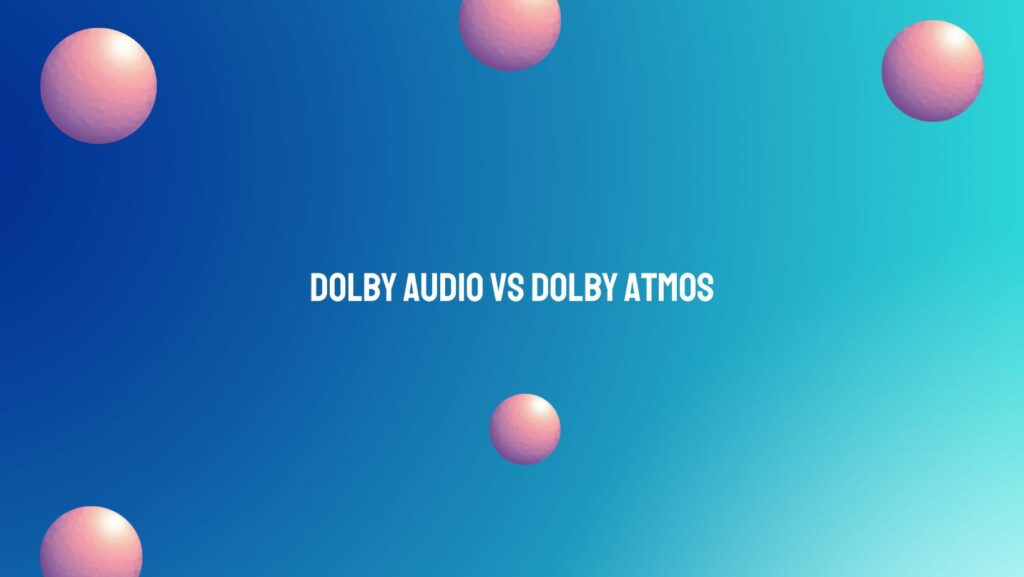In the realm of audio technology, Dolby has been a name synonymous with innovation and a commitment to elevating our auditory experiences. Two prominent audio technologies, Dolby Audio and Dolby Atmos, have captured the attention of both cinephiles and audio enthusiasts alike. This article delves into the distinctions between these two formats, exploring the nuances that make each a unique contributor to the evolving landscape of sound.
Dolby Audio: The Standard for Clarity and Depth
Dolby Audio represents a family of technologies aimed at enhancing audio quality across various devices, including smartphones, tablets, TVs, and home theater systems. It encompasses different versions, such as Dolby Digital and Dolby TrueHD, each offering improved audio fidelity.
Dolby Digital, a widely adopted format, is known for its efficient compression algorithm, delivering high-quality audio with reduced file sizes. It’s a common presence in DVDs, Blu-rays, and streaming services, providing a clear and immersive experience with its multi-channel surround sound.
Dolby TrueHD, an advanced version, is favored for its lossless audio quality. It ensures that the audio signal remains faithful to the original recording, making it a go-to choice for audiophiles who demand uncompromised sound reproduction.
Dolby Atmos: A Revolution in Three-Dimensional Audio
Dolby Atmos represents a seismic shift in audio technology, introducing a three-dimensional soundscape that goes beyond the traditional channel-based approach. Unlike Dolby Audio, which focuses on delivering surround sound through specific channels, Dolby Atmos employs object-based audio. This means that sound elements are treated as individual objects that can move freely in a three-dimensional space.
One of the hallmarks of Dolby Atmos is its inclusion of height channels, allowing sound to emanate not just around the listener but also from above. This vertical dimension adds a level of immersion and realism that was previously unattainable with traditional audio formats. Dolby Atmos is the preferred choice for those seeking a truly cinematic and lifelike audio experience.
Compatibility and Implementation:
Dolby Audio is widely supported across a broad range of devices, making it a practical and accessible choice for everyday use. From streaming services to home theater systems, Dolby Audio’s compatibility ensures a consistent audio experience.
On the other hand, Dolby Atmos requires specialized hardware and software support to unlock its full potential. Home theater setups with additional height speakers and Dolby Atmos-enabled content are essential for experiencing the immersive audio landscapes that Dolby Atmos promises.
Conclusion:
In the eternal debate of Dolby Audio vs. Dolby Atmos, the choice boils down to individual preferences, equipment compatibility, and the desired level of audio immersion. Dolby Audio, with its various iterations, stands as a reliable standard for high-quality sound reproduction across a multitude of devices. Meanwhile, Dolby Atmos, with its groundbreaking three-dimensional audio, caters to those seeking a cutting-edge, cinema-like experience that transcends conventional audio boundaries. As technology advances, both Dolby Audio and Dolby Atmos continue to shape the way we perceive and enjoy the world of sound.


